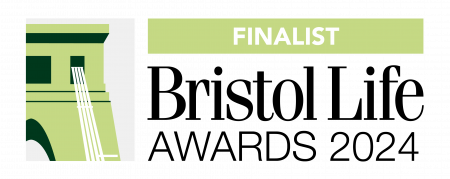GUEST BLOG
HANNAH ROPER
Ideal Client, this is a term so often used in business and especially marketing but what does it really mean?
In business your Ideal Client is a category of customer who you can really help with your product or service. They are the people you set your business up for!
Whether you saw a gap for a particular product that you searched high and low for, or were in need of a service that either didn’t exist or those offering it were just not ‘your people’, you will have had an idea of what was missing and how you could help.
Why is it so important to identify your ideal client? Have you heard the saying…if you talk to everyone you talk to no one? Well this is more crucial than ever in a world that has moved online. Customers buy with their hearts not their heads, purchases are driven from a place of emotion so it is so important to create content (social media posts, website copy, email sequences, videos, blogs and the like) that speak to your intended audience, it needs to resonate with their personal situation and allows them to connect with the business on a more personal level because at the end of the day people buy from people.
But…if you don’t know who you are talking to then creating this content becomes very difficult, lacks intention and fails to make that connection between customer and business.
Here are my top 5 tips for identifying and defining who is your ideal client.
- Start with yourself!
You will have so much in common with your ideal client as there was a very good reason you set up your business!
Start to create a profile for your ideal client, the more you can personify them, the more you can use this when creating contenting.
What do you know about them and get specific…think age, family situation, employment status and hobbies.
You are selling them something so they need to have the financial situation to purchase and the space and time to then use it.
The more you can understand about them the more you can tailor your marketing efforts. Another great exercise as you develop your brand and work with your ideal client is to take notice of the language they use to describe your business and product/service.
You can then incorporate this into your content to connect with them even more!
- Think about your ideal client’s goals and problems
Your ideal client will be looking to achieve something and/or solve a problem they have.
By understanding their aspirations you can focus your content and communications to meet their needs and show them how you can help them.
List out all the goals they may have and all the problems they have. Think outside the box!
Even if it is not directly linked to your product or service you can show your ideal client you understand them and will offer advice and inspiration as well as your product/service.
- Identify the transformation your ideal client will go through
Your ideal client will buy your product or service with emotion, therefore demonstrating the transformation they will experience is key!
Spend time looking at how you will take your ideal client on a journey, what will they experience and how, and what will the end result look and feel like!
- List their objections and barriers to buying your product or service
There will always be reasons why someone doesn’t buy straight away, maybe they don’t understand what you are really offering, maybe they think it’s too expensive, maybe they have some misconceptions as to how you can solve their problems or the transformation you are offering.
Spend time listing the objections and barriers for your ideal client, strat to explore how you can create content to address them and show that whatever their objections and barriers your business is always the answer!
- Get niched!
This is always the hardest part! You need to be specific with what you offer, yes your product or service could be purchased by anyone but if you don’t make it clear specifically what you do and who you help, then your ideal client will pass you by and you won’t stand out from the crowd.
It is better to be seen as the expert in one area rather than in general as it allows you to build trust and hold authority. If you are too broad with what you offer it becomes difficult to maintain and scale as you are giving yourself no room for growth.
The key is to keep it simple! Start in one area, with one main offer and put effort into really understanding how that offer helps and supports your ideal client.
When you have that deeper level of understanding of your ideal client you can then add more to your offering and grow!
Most importantly use all the above points to plan and organise the content you create for your ideal client, talk in a language they understand and position yourself as an authority to build trust and create opportunities for your ideal client to connect with you and your business brand.
About the Author
Hannah Roper, founder and director of The Female Creative, is a coach and mentor to female business owners, helping them reduce their overwhelm and turn their ideas into action through goal setting, accountability and increasing their confidence and self belief. With over 20 years in learning and development and 7 years as an entrepreneur, Hannah uses her experience and knowledge to provide solutions to business growth and organisation through 121 coaching, a group membership and as a podcast host for The Female Creative Talks Podcast. Hannah has recently been chosen to receive an award for Top 20 Female Business Coaches of 2022 by Coach Foundation and was nominated for the 2022 Pamodzi Inspirational Women Awards for the second year in a row in the business category.
To find out more please visit www.thefemalecreative.co.uk




